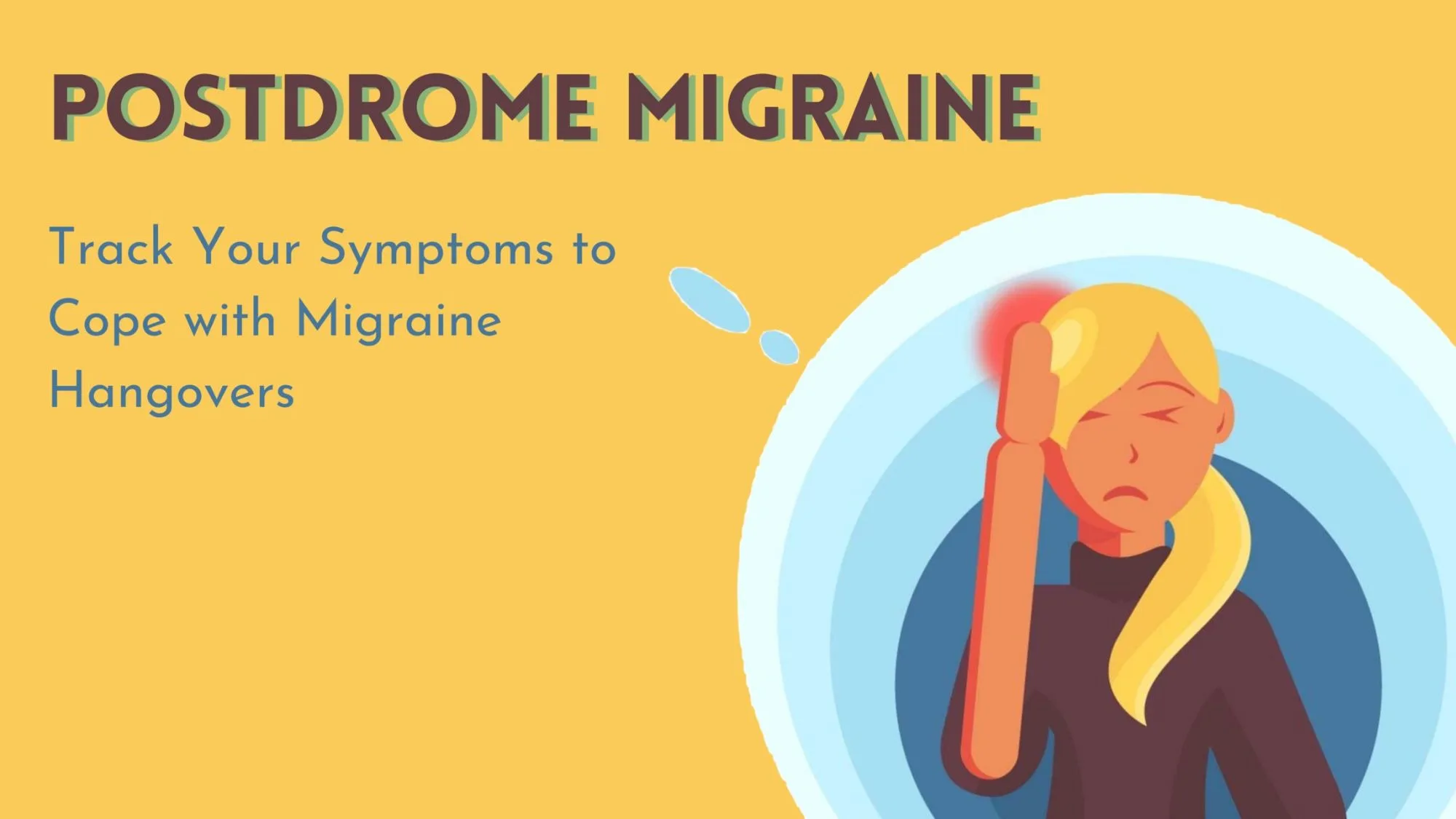
Have you ever suffered from a lingering migraine? Did you wonder what it was and why it was happening? Look no further! This article covers the basics of a migraine attack — Starting from the slight headache you feel to the postdrome migraine after the attack. However, migraines don’t have to be untreatable. Having an all-in-one app helps you track your symptoms and manage your migraine episodes to better cope with them. Keep reading below to find out how to start.[1][2]
What is a Migraine?
A migraine is a very common medical condition that causes reoccurring pounding headaches, throbbing and a variety of symptoms at the front or side of the head. Scientists believe migraines are a product of environmental, genetic and stress factors. These causes vary from person to person but are most prevalent in females. Although genes play a critical role, drug abuse, lack of sleep, emotional strains, stress and hormonal changes could also lead to migraines.[3][4][5]
The Different Stages of a Migraine
A migraine usually has four stages. The span leading up to the headache is the prodrome stage. The second stage has feelings of numbness with sensory disturbances. This is the aura stage. The headache itself is the third stage. This is known as the migraine attack. Lastly, the span after the headache is known as the postdrome migraine stage.
The Prodrome Stage of Migraines
The pre-headache or the premonitory phase is commonly known as “prodrome.” The prodrome stage marks the beginning of a migraine attack. This stage is less in severity and can span from hours to a few days. If a person experiences reoccurring prodrome, his or her care team can study their symptoms and patterns to guide a treatment plan that may lessen the severity of the oncoming headache. Avoiding trigger factors and practicing mindfulness and behavioral techniques can lessen the severity or completely prevent the headache in some cases. During this stage, taking medication, avoiding other trigger factors and practicing mindfulness meditation, relaxation therapy or other bio-behavioral techniques, can even prevent headaches in some cases.
Symptoms of Prodrome Stage
- Euphoric mood
- Fatigue
- Hyperactivity or hypo-activity
- Stiffness or neck pain
- Sensitivity to light
- Sensitivity to sound
- Lack of concentration
- Moodiness
- Nausea
- Lack of Sleep
- Irritability
- Excessive yawning
- Frequent urination
The Aura Stage of Migraines
The aura stage is prevalent in only 1 out of 3 people experiencing a migraine. Although uncommon for the majority, this phase transitions to the migraine attack. It is moderate in severity and can span anywhere from a few minutes to an hour. The aura stage can also happen multiple times before the oncoming headache. Auras are mostly visual but can also be encountered as motor, sensory or verbal disturbances. Visual auras are however most common.
A visual aura is an electrical or chemical signal in the form of a wave. This wave moves across the visual cortex of your brain. The visual cortex is the part of your brain that receives, segments and processes all visual signals. As the wave makes its way through the brain, you might have visual hallucinations. Auras are not the same for everyone, you might experience flashes of light or spots and small holes of light.
Scotoma Migraine
A visual scotoma represents a disturbance of vision. Scotoma is often accompanied by the second stage of aura. This disturbance of vision leads to a temporary or partial loss of vision. It refers to experiencing a blind spot in your visual field. This can stay within a particular area or shift over time.
Symptoms of Aura Stage of Migraines
- Weakness in the facial muscles or limbs
- Temporary vision loss
- Tingling sensation on part of the body
- Changes in speech
- Sensitivity to light
- Sensitivity to sound
- Disturbances in smell, touch and taste
The Migraine Attack Stage
This stage marks the feeling of an actual headache. The heavy throbbing sensations on the front or the side of the head are enlightened in this stage. This phase is the most extreme in severity and can span anywhere from a few hours to a few days. The pain of a migraine often starts above the eyes and typically impacts one side of the head. It can also move from one area to another. The pain only gets worse if excessive physical strain is put on the human body.
Symptoms of the Migraine Attack Stage
- Throbbing and drilling sensations
- Burning
- Insomnia
- Nasal Congestion
- Moodiness
- Depressed mood
- Neck pain and stiffness
- Anxiety
- Trouble concentrating
- Sensitivity to smell, light and sound
- Worsened pain with physical activity
- Vomiting
The Postdrome Stage
A “migraine hangover” is the common name for the postdrome migraine stage. This is the fourth and last stage. During a migraine episode, the most impact is suffered by the cranial part of the body. The resulting migraine hangover or the postdrome stage refers to the lingering pain. This pain can be present through the entire body or a specific area. The last few hours of the pain in the postdrome migraine stage are less in severity and can span up to 48 hours.
Symptoms of the Postdrome Stage
- Euphoric mood
- Fatigue
- Lack of comprehension
- Inability to concentrate
- Depressed mood
- Extreme tiredness
- Confusion
- Irritation
- Sluggishness
Science Behind a Migraine Hangover
The initial migraine pain happens due to waves caused by the activity of group exciting brain cells. These trigger chemicals, such as serotonin to narrow blood vessels. Serotonin affects every part of your body, from emotions to your motor skills. It is considered a natural mood stabilizer and is a necessary chemical for communication between nerve cells. Due to narrowing blood vessels throughout the body as a result of excess serotonin, chemical levels fluctuate. Fluctuating levels eventually lead to a migraine.
Fluctuating levels of these chemicals in the human body result in a migraine. Serotonin levels affect both sexes. Research suggests the rise and fall of hormone levels indicate the throbbing sensation while experiencing a migraine.
Why Does a Migraine Hangover Occur?
There is a lack of research on the postdrome migraine stage. This is because just as finding the root cause of the initial migraine is difficult in individual people, there is no particular cause for postdrome migraine sickness. It is a part of the migraine itself. After the peak of pain has ended the changes in activity and blood flow that occur during the aura and head pain phase of the attack persist.[10]
Effects of a Migraine Hangover
Postdrome can be just as draining and tiring as a headache. Symptoms of the postdrome stage are similar to the migraine attack at a lower intensity. Fatigue, body aches, trouble concentrating, dizziness and sensitivity to light are reported as the most usual symptoms. People in the postdrome stage are still prone to migraine attacks. Engaging in relaxing activities like yoga, mindfulness or meditation can avoid triggering another migraine episode.
In order to successfully cope with reoccurring migraines, it is crucial to find the correct treatment that works for each individual. There is no perfect cure for migraine episodes or the oncoming migraine hangover but maintaining a steady schedule can help. Using a headache diary can help individuals find a pattern with the symptoms and feelings associated with an oncoming headache. Keeping track of early symptoms is essential to catch and treat migraines in the earlier stages. Early treatment ensures a lessened severity of the headache and can also stop a migraine episode if dealt with correctly.
If you experience migraine attacks and haven’t yet partnered with a tool to help you cope, use the CareClinic application to manage and keep a track of your symptoms. CareClinic is an all-in-one care app. Anyone can use and access the interface. It is available 24 hours a day and is user-friendly.[11][12]
Preventing a Migraine
Preventing a migraine hangover starts with recognizing the symptoms. Acting upon the initial triggers of a migraine attack is crucial to stop an episode from occurring. Avoiding factors that you know trigger migraines may help reduce your likelihood of postdrome or reduce the severity and the potential for triggering another full-blown attack.
Treatments Before the Migraine Attack
Practicing mindfulness, yoga and meditation during the prodrome and aura stage can lessen the severity of the oncoming headache. To relieve symptoms, a cold press is often used. Additionally, if a prescription has been allotted for migraines, consuming those can also relieve symptoms.
Some of these medications include:
- Anti-nausea drugs
- Over-the-counter drugs that contain acetaminophen
- Triptans
- Dihydroergotamine
- Gepants
Treatments For the Migraine Attack
Treatments for migraine attacks work best when used as soon as possible after the symptoms appear. People who have reoccurring migraine attacks benefit from carrying their medication with them all the time. If you are unable to take your medication as soon as symptoms appear, consume them as soon as possible to avoid a full-blown attack.
Prescription Drugs for Migraines
Over-the-counter treatments are most commonly used for individuals beginning to experience severe headaches. Aspirin and inflammatory drugs (such as ibuprofen) are the customary drugs for a migraine episode. Prescriptions drugs may be used to treat migraines at most times when over-the-counter options are insufficient.
- Triptans: These are referred to as serotonin-receptor agonists. Triptans work by targetting down overactive nerves in the brain caused by a migraine attack. They also help shrink dilated blood vessels back to normal. This helps manage migraine symptoms. Triptans vary in dosage based on the intensity of the migraine. Some forms include oral tablets (present in forms to swallow or dissolve with a liquid), nasal sprays and injections.
- Gepants: These are referred to as small molecule calcitonin gene-related peptide (CGRP) receptor antagonists. They work to block CGRP from attaching to its receptor and initiating those pain signals. Gepants vary in dosage based on the intensity of the migraine. Some forms include oral tablets (present in forms to swallow or dissolve with a liquid), nasal sprays and injections.
- Ditans: These are also referred to as serotonin-receptor agonists. Unlike triptans, they do not constrict the coronary or cerebral blood vessels and offer an alternative for those who cannot take the triptans. Ditans also vary in dosage based on the intensity of the migraine. Some forms include oral tablets (present in forms to swallow or dissolve with a liquid), nasal sprays and injections.
- Ergot Derivatives: This chemical attacks the dopamine and noradrenaline receptors. Dihydroergotamine and ergotamine may cause blood vessels in the body to constrict (become narrower). Ergot derivates can be administered in a suppository or tablet form and have a standard dosage.
Seeing a Doctor for Migraines
Immediately contact a health care specialist or a doctor when you notice any of the following:
- Reoccurring headaches each month, with each lasting hours to days.
- Constant pain around your forehead, eyes or ear.
- Throbbing sensations or stiffness around the neck.
- Several headaches consecutively out of the norm.
- Your headaches are affecting your social, home or school life.
- You are experiencing prodrome symptoms including nausea, vomiting, or sensory disturbances.
Practicing an Efficient Headache Hygiene
Research shows the root cause behind a postdrome migraine is stress. This can trigger or cause a migraine to elevate. It is important to take time after a migraine attack to focus on your mental health and take care of yourself. A consistent sleeping pattern, healthy lifestyle, exercise and a healthy diet can help reduce stress. Additionally, to reduce migraine triggers, relaxation techniques like meditation and yoga are beneficial.
Understanding your unique migraine journey is key to maintaining a healthy routine to avoid migraine attacks. The CareClinic app ensures you can track your symptoms efficiently while you take the time to focus on yourself and your well-being to help your body recover from each migraine attack and its aftereffects.
Manage Postdrome Migraines
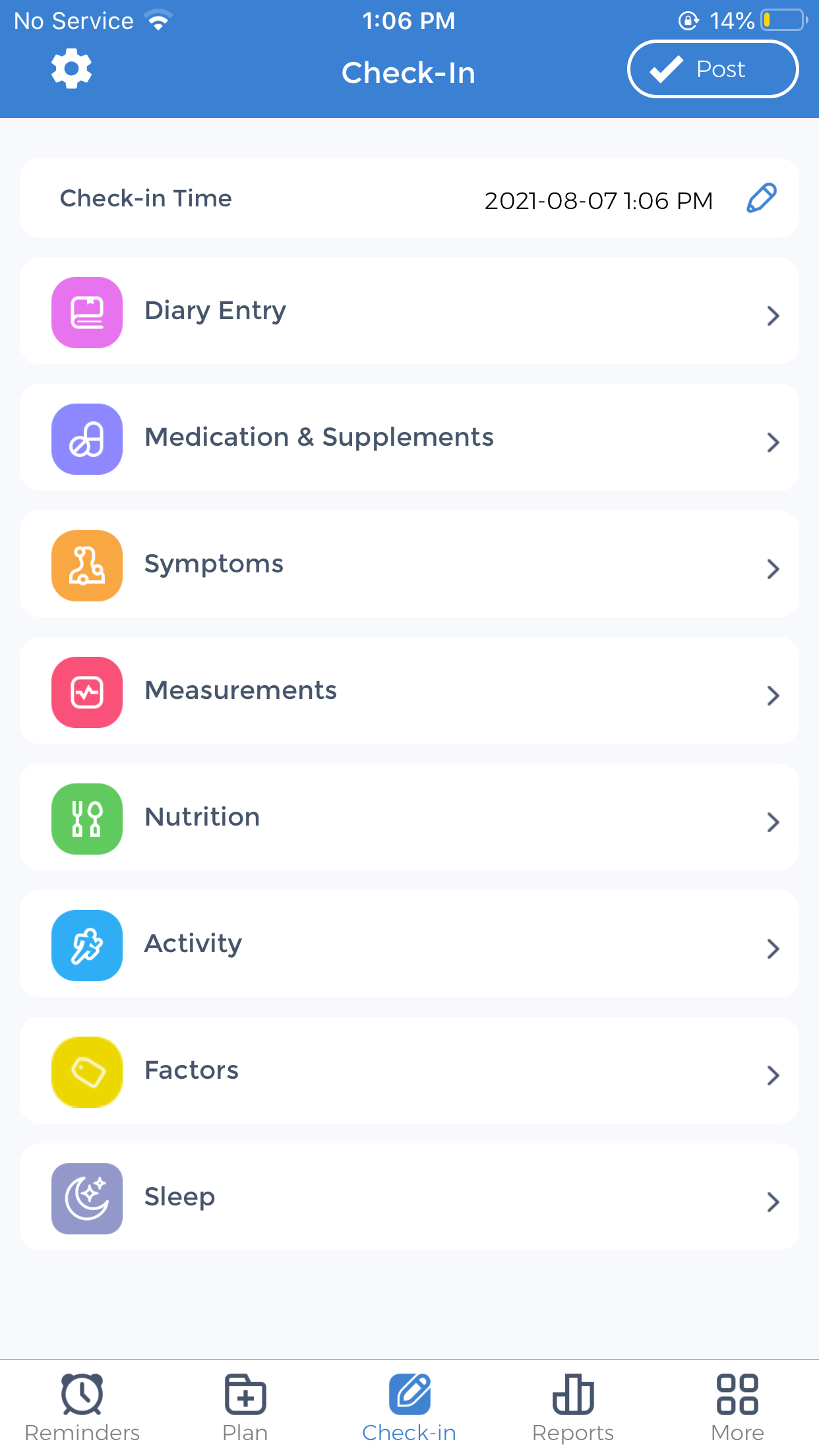
Tracking Migraine Symptoms
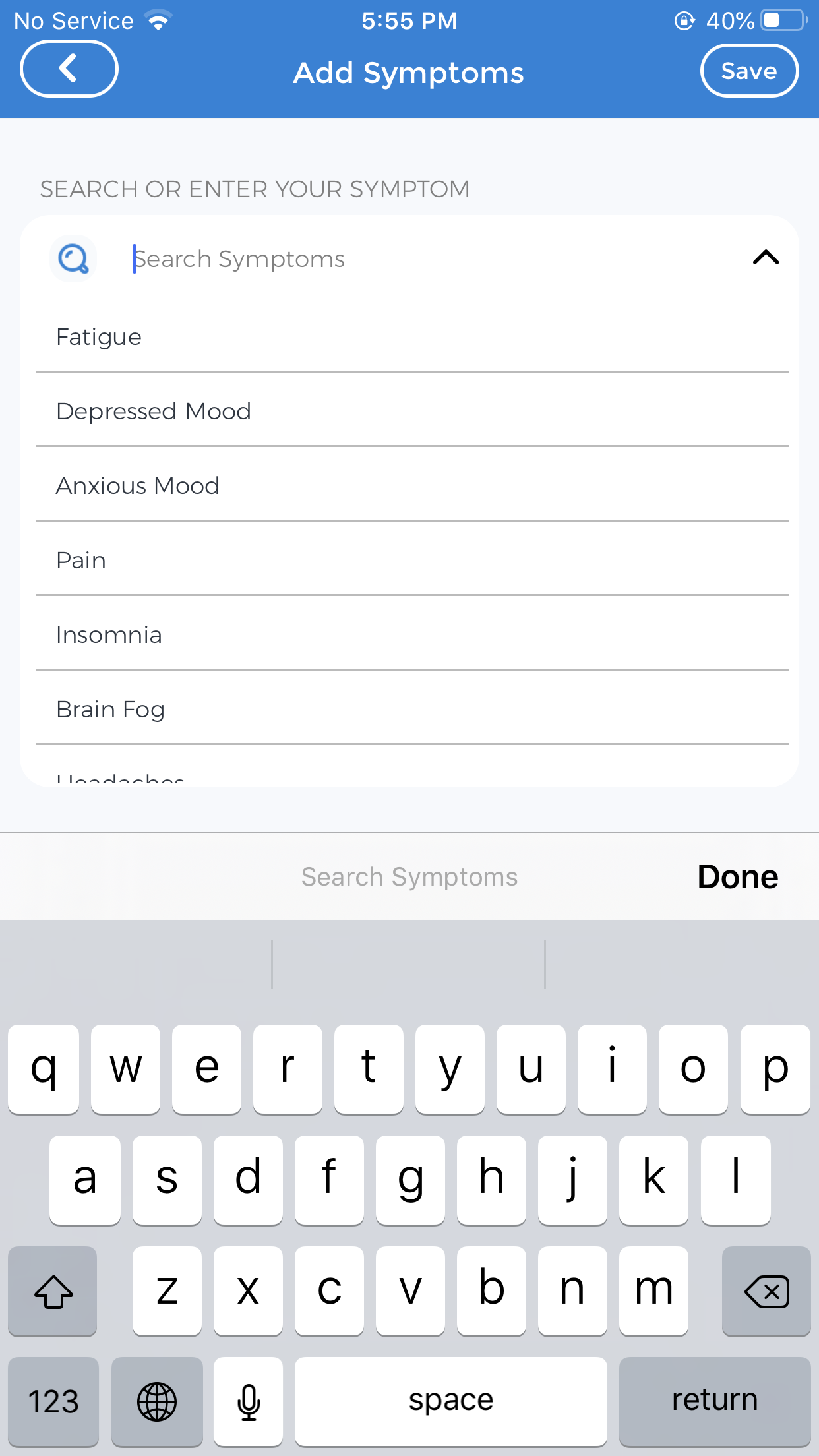
You can select from a list of medical symptoms and record them as part of your daily check-in or journal entry. Common symptoms of migraines include fatigue, depressed mood, insomnia, headache and throbbing sensations. From the drop-down menu on the symptom tracker, you can keep a log of the start date, the frequency and the intensity of a symptom.
Furthermore, you can track your sleeping patterns, daily physical activity, nutrition and other measurements to get informed reports about your body. You are also able to add custom fields to track what matters to you! Your symptom tracking makes it easier for your healthcare provider to make informed and accurate decisions.
Once entered, you can track and access your profile easily. Your information is confidential and accessible by only you. If you prefer viewing on a larger screen, opt for the CareClinic web app!
Manage Headache Hygiene
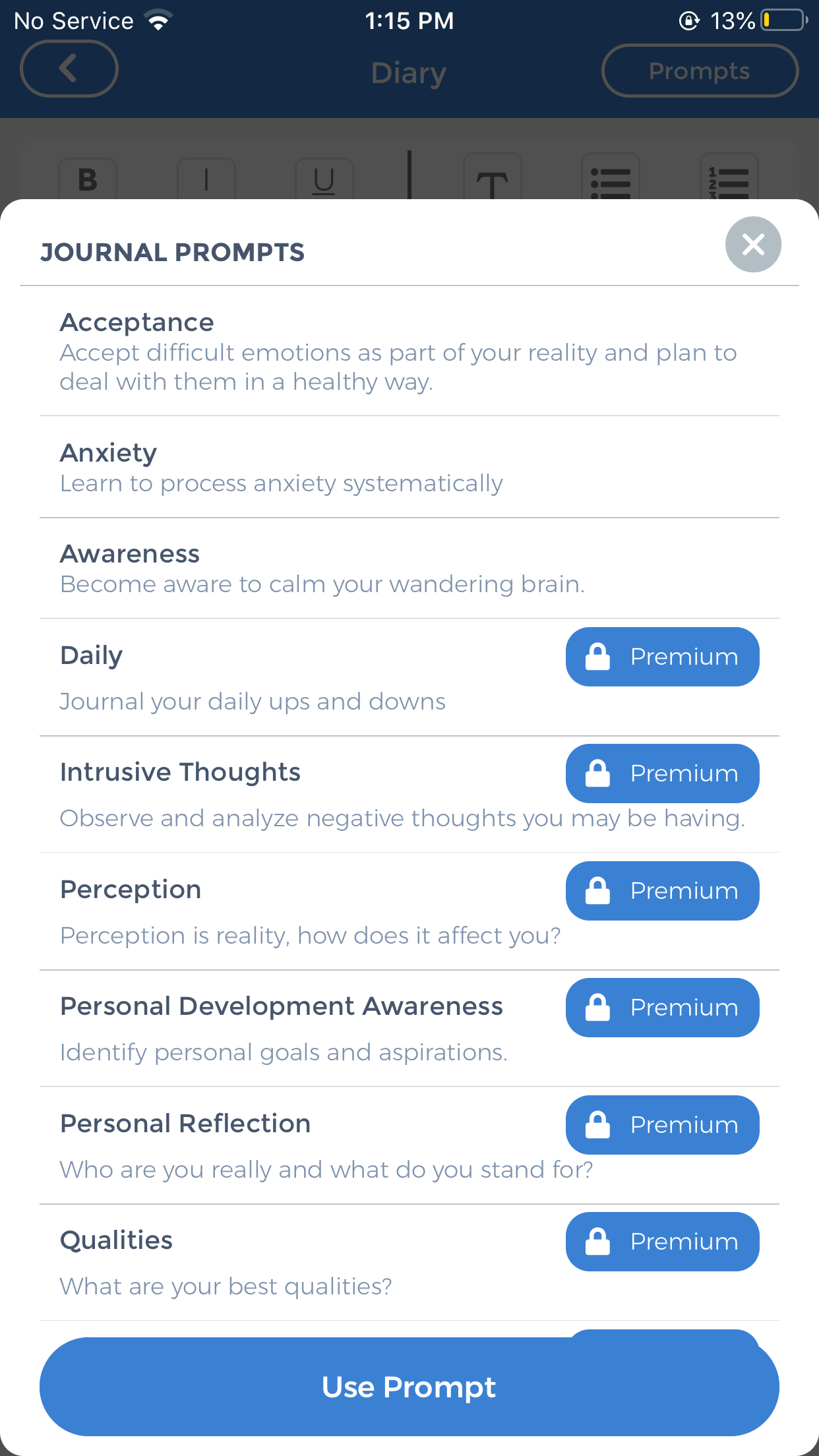
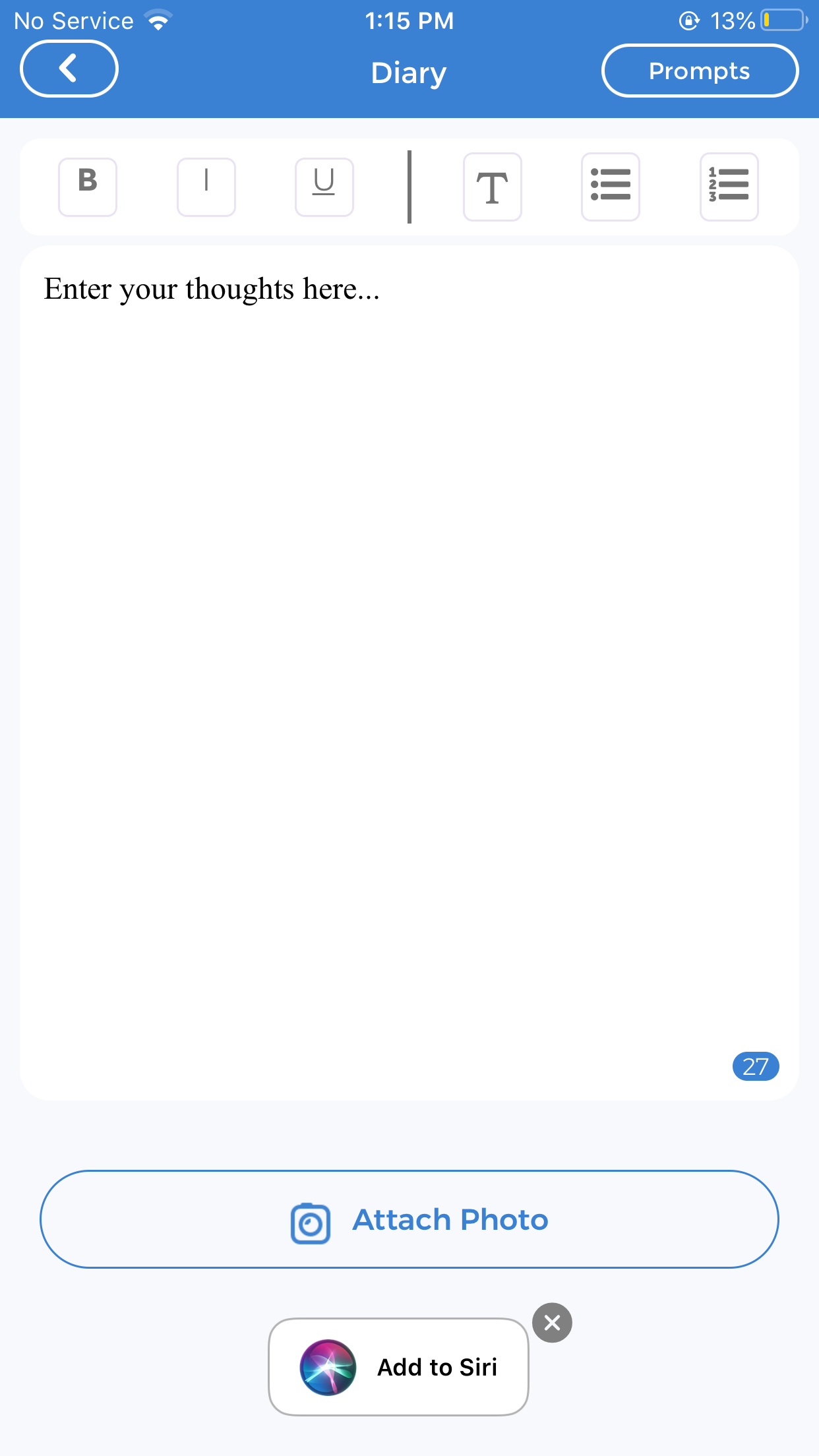
Benefits of Managing Headache Hygiene
Each individual experiences a migraine episode differently. The best way to cope with migraines is to identify your symptoms and acting upon them before it’s too late. The CareClinic application tools allow you to highlight the underlying causes of a migraine and the triggers associated with it.
Consistency is key. Find the best time to write in the diary entry and stick to that regime regularly. Sticking to a routine will help identify accurate results and gather dependable logs, charts and correlations for you and your healthcare provider.[19]
Leveraging the CareClinic Platform
The CareClinic app is available on three different sites for easy access. You can directly download it from the App Store for iOS users or Google Play for users with an Android device. Finally, the tools and resources are also available on the CareClinic website for direct download. All three interfaces are user-friendly and easy to access. So, what are you waiting for? Download the app now and start tracking your symptoms, daily activities or just to jot down your thoughts!
Migraines are a very common medical condition that causes irritation and can defer you from everyday tasks. Managing migraines and the following migraine hangover doesn’t have to be hard with the CareClinic app. The application services were built to ease stress and manage medical conditions without hassle. Download the app now and start tracking to help improve your well-being.
References
- “Stages of a migraine attack – The Migraine Trust”. https://migrainetrust.org/understand-migraine/stages-of-a-migraine-attack/
- “Migraine: What It Is, Types, Causes, Symptoms & Treatments”. https://my.clevelandclinic.org/health/diseases/5005-migraine-headaches
- “Migraine: A Review on Its History, Global Epidemiology, Risk Factors, and Comorbidities – PMC”. https://pmc.ncbi.nlm.nih.gov/articles/PMC8904749/
- “Prevalence of Migraine and its Relationship with Psychological Stress and Sleep Quality in Female University Students in Saudi Arabia – PMC”. https://pmc.ncbi.nlm.nih.gov/articles/PMC7547128/
- “Exploring the Hereditary Nature of Migraine – PMC”. https://pmc.ncbi.nlm.nih.gov/articles/PMC8075356/
- “The Phases and Anatomy of a Migraine Attack – MigraineDisease.org”. https://migrainewarriors.org/essentials/phases/anatomy-of-a-migraine-attack/
- “Prodrome: Spotting the first signs of a migraine attack – The Migraine Trust”. https://migrainetrust.org/news/prodrome-spotting-the-first-signs-of-a-migraine-attack/
- “From prodrome to postdrome – National Migraine Centre”. https://www.nationalmigrainecentre.org.uk/news/from-prodrome-to-postdrome/
- “Migraine headaches Information | Mount Sinai – New York”. https://www.mountsinai.org/health-library/report/migraine-headaches
- “The Migraine Postdrome”. https://pubmed.ncbi.nlm.nih.gov/30074547/
- “Migraine Hangover (Postdrome): Symptoms & Treatment”. https://my.clevelandclinic.org/health/diseases/migraine-hangover-postdrome
- “Keeping a headache diary – The Migraine Trust”. https://migrainetrust.org/live-with-migraine/self-management/keeping-a-migraine-diary/
- “Meditation Shortens Migraines By 3 Hours”. https://time.com/3340452/meditation-shortens-migraines/
- “Migraine Medications – StatPearls – NCBI Bookshelf”. https://www.ncbi.nlm.nih.gov/books/NBK553159/
- “Gepants – The Migraine Trust”. https://migrainetrust.org/live-with-migraine/healthcare/treatments/gepants/
- “New Treatments in Migraine: An In-Depth Review”. https://www.neurologylive.com/view/new-treatments-migraine-in-depth-review
- “When to see your doctor for headache pain – Harvard Health”. https://www.health.harvard.edu/healthbeat/when-to-see-your-doctor-for-headache-pain
- “Migraine vs Headache: What Causes Migraines? & Headache Relief”. https://www.michiganmedicine.org/health-lab/when-should-you-see-doctor-headache-or-migraines
- “A randomized trial of a web-based intervention to improve migraine self-management and coping”. https://pubmed.ncbi.nlm.nih.gov/22413151/


